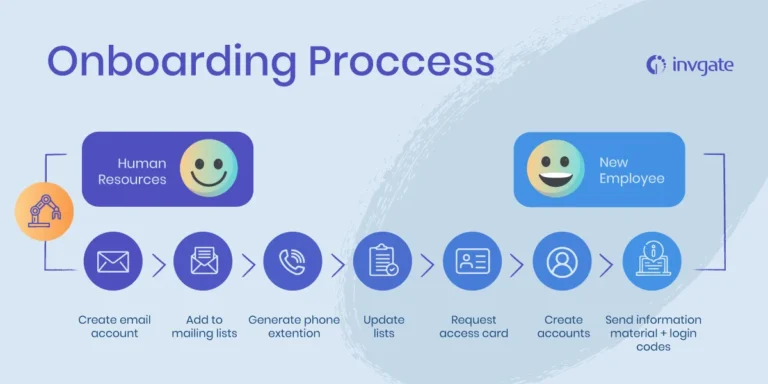The Vital Role of Effective Onboarding Strategies
Understanding the onboarding process can be a game-changer in how new employees perceive their roles and align with a company’s aspirations. A well-crafted onboarding experience can significantly increase employee engagement, reflecting productivity and loyalty towards the organization. With a solid onboarding platform, the intricate details of integrating a new hire can be managed with finesse, ultimately leading to a robust and cohesive company culture.
What Is Employee Onboarding?
Employee onboarding involves more than just administrative tasks and basic introductions. It is a comprehensive program that connects a new employee with the company’s values. The Onboarding platform is not a one-time event but a process lasting up to a year. During this time, the new hire learns about the business, its values, and how they can contribute to its success. The process includes various activities, from paperwork to mentorship, all aimed at equipping employees with the tools and connections they need to excel in their new roles.
The Impact of Onboarding on Employee Engagement
Employee engagement can measure how emotionally invested and committed an employee is to their company and its goals. Effective onboarding is crucial in kickstarting this relationship positively. During this time, a new hire decides whether they feel valued and see potential for growth within the company. According to a study, retention by 82% and productivity by over 70%. These statistics underscore the significant influence that onboarding has on an employee’s initial and long-term engagement with the company.
Critical Components of a Successful Onboarding Program
A successful onboarding program should be an amalgamation of structure and flexibility. It requires careful planning, which includes clear communication strategies, role-specific training, and integration activities that bind the new hire to the organizational culture. Additionally, successful programs often incorporate measures to monitor progress, with milestones and checkpoints allowing new hires to gauge their development while providing the company with actionable insights into the effectiveness of their onboarding strategies.
Common Mistakes in Onboarding and How to Avoid Them
Despite its importance, many companies still need to improve their onboarding processes, often inundating new hires with too much information early on or failing to communicate expected outcomes properly. Another common pitfall is paying attention to the human aspect of onboarding, focusing solely on paperwork and procedures instead of building relationships and fostering a welcoming atmosphere. Companies can avoid these mistakes by pacing the information flow, clearly defining roles and expectations, and encouraging team interactions from day one.
Building a Company Culture Through Onboarding
The onboarding stage is pivotal for embedding a new employee within a company’s culture. During this period, the company’s foundational principles, norms, and values are conveyed in a manner that resonates with the new team members. When done correctly, onboarding becomes a catalyst for unity, driving employees to not only understand the company’s culture but to become its ambassadors, ultimately reinforcing a robust internal community grounded in shared beliefs and goals.
Personalizing the Onboarding Experience
Successful onboarding isn’t a one-size-fits-all procedure; it necessitates balancing standardized company policies and personalization tailored to individual needs. Personalizing the onboarding experience shows the company values each employee’s unique background and strengths. It could include personalized welcome packages, assigning mentors, or customizing training modules according to the individual’s role and prior experience, thus ensuring that each new hire feels genuinely integrated into the company’s ecosystem.
Feedback and Adaptation: Continuous Improvement of Onboarding
An adaptable onboarding program evolves. It allows for revisions and enhancements based on feedback from new hires and organizational needs. Companies that encourage open communication and solicit employee input often unearth innovative ideas for improving the onboarding process. This iterative approach ensures the onboarding experience is continuously fine-tuned to align closely with employee expectations and company objectives.
Onboarding Programs That Work
Investing in structured onboarding programs has proven to be beneficial for many organizations. Companies with effective onboarding report higher job satisfaction and reduced employee turnover. These case studies serve as benchmarks for designing onboarding programs that welcome new hires and prepare them to be productive, engaged members of the workforce.
As the workplace continues to evolve, particularly with remote and hybrid models becoming more prevalent, the onboarding process remains a constant as the first and one of the most critical touchpoints a company has with its new employees. It’s an invaluable component of the employee experience that, when done well, can have a lasting positive impact on individual and organizational success. To achieve this, companies must realize the power of a carefully crafted onboarding strategy that engages, informs, and integrates employees into their new work environment seamlessly and effectively.

